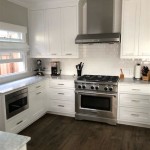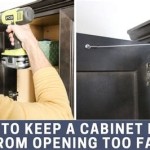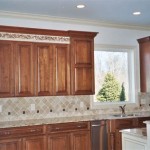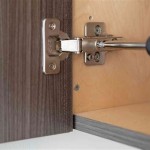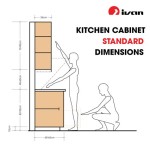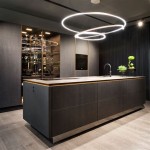How Much Does It Cost To Paint Kitchen Cabinets?
Painting kitchen cabinets can dramatically transform the aesthetics of a kitchen, offering a fresh, updated look without the expense of a complete remodel. However, understanding the costs associated with this project is crucial for budgeting and ensuring a satisfactory outcome. Several factors influence the final price, making it essential to consider each aspect carefully before embarking on the painting process. The cost can vary widely based on the size of the kitchen, the type of paint used, the condition of the cabinets, and whether the work is done DIY or by a professional.
The purpose of this article is to provide a comprehensive overview of the costs involved in painting kitchen cabinets. It will explore the various elements that contribute to the overall expense, including materials, labor, and preparation work. Furthermore, it will offer insights into cost-saving strategies and considerations for choosing between DIY and professional painting services. By understanding these factors, homeowners can make informed decisions and achieve their desired kitchen transformation within a reasonable budget.
Factors Influencing the Cost of Painting Kitchen Cabinets
Several key factors contribute to the overall cost of painting kitchen cabinets. These include the size and configuration of the cabinets, the condition of the existing finish, the type of paint and primer selected, and the approach chosen for the painting process – DIY or professional. Each of these elements plays a significant role in determining the final cost of the project.
The size of the kitchen and the corresponding number of cabinets are directly proportional to the cost. A larger kitchen with more cabinets requires more materials, labor, and time to complete the painting process. The complexity of the cabinet design, such as intricate molding or detailing, can also increase the labor hours and, therefore, the overall expense. Detailed preparation work is essential for a long-lasting and aesthetically pleasing finish.
The condition of the existing cabinet finish significantly impacts the preparation work required. Cabinets with damaged surfaces, peeling paint, or extensive grease buildup require more extensive cleaning, sanding, and priming. This added preparation increases the time and materials needed, contributing to a higher overall cost. In some cases, significant repairs may be necessary before painting can begin, further increasing the expense.
The type of paint and primer selected also influences the cost. Higher-quality paints and primers offer better coverage, durability, and longevity. While they may be more expensive upfront, they can ultimately provide a better value by reducing the need for frequent repainting. Oil-based paints are known for their durability, but they require more effort in application and cleanup. Latex paints are easier to work with and are available in low-VOC (volatile organic compounds) options, making them a more environmentally friendly choice.
The choice between DIY and professional painting also significantly impacts the cost. DIY painting can save on labor costs, but it requires a significant investment of time, effort, and expertise. Professional painters bring experience and efficiency to the project, ensuring a high-quality finish and minimizing potential errors. However, professional services come with a higher price tag due to labor costs and overhead expenses.
Breaking Down the Costs: Materials, Labor, and Preparation
To accurately estimate the cost of painting kitchen cabinets, it is essential to break down the expenses into categories: materials, labor (if applicable), and preparation. Each category encompasses specific items and services that contribute to the overall cost.
Material costs typically include paint, primer, sandpaper, cleaning supplies, masking tape, drop cloths, brushes, rollers, and caulking. The cost of paint can vary significantly depending on the brand, type, and quality. Premium paints offer better coverage and durability, but they also come with a higher price tag. Primer is essential for ensuring proper adhesion and creating a uniform surface for the paint. The quantity of materials needed will depend on the size of the kitchen and the number of cabinets.
Labor costs are a significant component of professional painting services. The cost of labor depends on the painter's hourly rate or the project's fixed price. Factors such as the complexity of the job, the condition of the cabinets, and the location of the project can influence the labor rate. It is important to obtain multiple quotes from different painters to compare prices and services offered. Professional painters typically factor in time for cabinet removal, cleaning, sanding, priming, painting, and reinstallation.
Preparation work is a crucial aspect of cabinet painting, and its cost should not be overlooked. This category includes expenses related to cleaning, sanding, repairing damages, and masking off areas not to be painted. Thorough preparation is essential for ensuring proper adhesion and a smooth, even finish. Depending on the condition of the cabinets, preparation work can be time-consuming and labor-intensive, requiring patience and attention to detail. Specialized cleaning solutions and tools may be necessary to remove grease, dirt, and old finishes.
Accurate budgeting requires a comprehensive assessment of all material and labor costs. Obtaining detailed quotes from professional painters or creating a detailed materials list for DIY projects ensures a more realistic estimate of the total expense. Failure to account for all necessary materials and preparation work can lead to unexpected costs and delays during the painting process.
DIY vs. Professional Painting: A Cost Comparison
One of the most significant decisions affecting the cost of painting kitchen cabinets is whether to undertake the project as a DIY endeavor or hire professional painters. Each option offers its own set of advantages and disadvantages in terms of cost, time, and quality.
DIY painting can significantly reduce labor costs, as homeowners perform the work themselves. However, it requires a substantial investment of time, effort, and expertise. Homeowners must possess the necessary skills and tools to properly prepare the cabinets, apply paint evenly, and achieve a professional-looking finish. Mistakes can be costly, potentially requiring additional materials and time to correct. Furthermore, DIY painting often takes longer than professional services, disrupting the household routine.
Professional painting services come with a higher price tag due to labor costs and overhead expenses. However, professional painters bring experience, efficiency, and specialized equipment to the project. They can complete the job in a fraction of the time it would take a DIYer, minimizing disruption to the household. Professional painters also offer expertise in color selection, paint application techniques, and surface preparation, ensuring a high-quality and durable finish. Hiring professionals also often includes some form of warranty on the labor, safeguarding the homeowner.
A cost comparison between DIY and professional painting should consider all factors involved, including materials, time, and potential errors. While DIY painting may appear less expensive upfront, the cost of mistakes and the value of time spent should be factored into the equation. Professional painting services offer a higher level of expertise and efficiency, potentially resulting in a better long-term value due to the quality and longevity of the finish.
Ultimately, the decision between DIY and professional painting depends on the homeowner's budget, skill level, and time availability. Homeowners with limited budgets and sufficient DIY experience may opt for the DIY approach. However, homeowners seeking a high-quality finish and minimal disruption may prefer to hire professional painters. Careful consideration of all factors ensures a well-informed decision and a satisfactory outcome.
For example, a small kitchen might have 10 cabinet doors and 5 drawers. A DIY approach could cost approximately $200 - $400 for materials, investing a significant amount of time. A professional might charge $800-$1500 for the same kitchen, completing the work in a fraction of the time with a potentially superior finish.
The key takeaway is understanding the value proposition of each option. If the homeowner values their time highly and wants assurance of quality the professionals becomes the preferred option. If budget is the driving factor, and the homeowner is capable, DIY can be the more sensible choice.

Kitchen Cabinet Painting Cost 2024

How Much Does It Cost To Paint Cabinets Maller Painting

How Much Does It Cost To Paint Kitchen Cabinets Professionally In Novi Mi

What Is The Cost To Paint My Kitchen Cabinets Ramsden Painting

How Much Does It Cost To Paint Kitchen Cabinets Paintzen

How Much Does It Cost To Paint Kitchen Cabinets

Costs To Paint Kitchen Cabinets Diy Vs Hiring Professional Painters

How Much To Paint Kitchen Cabinets Professionally Diy Vs Hire A Pro

Nj How Much Does It Cost To Paint Kitchen Cabinets In Southern Brennan Contracting

Cost To Paint Kitchen Cabinets And For Cabinet Painters Grand Haven
Related Posts

